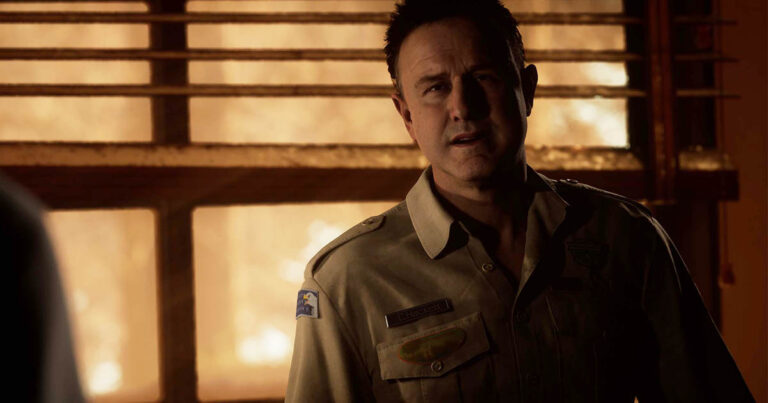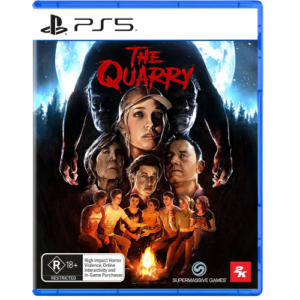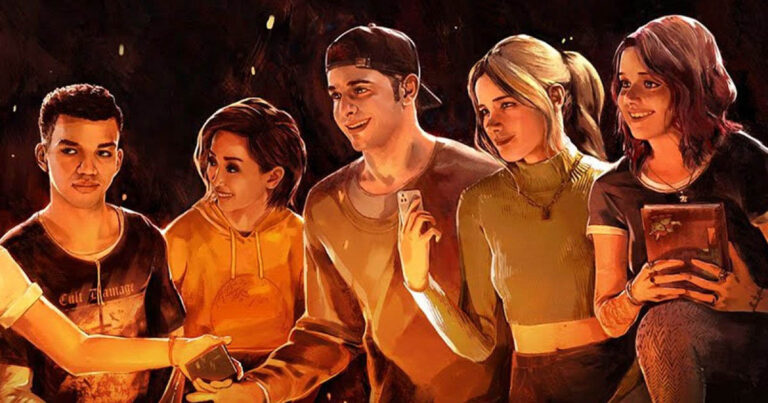Survive the night in a mysterious quarry as you become the quarry in The Quarry!
The Quarry review
The Quarry review
I was late to the party with Until Dawn, a PlayStation-exclusive title that put a cast of characters through hell, where your decisions determined who lived and who died. It was by no means a perfect game, but played in ad hoc couch co-op, passing a controller back and forth or just yelling about time-sensitive choices, proved to be an incredibly entertaining way to play what was already a robust offering.
You also could have played it alone, where it likely would have been scarier and the weight of those failed decisions, cheap or otherwise, would have likely loomed larger. Fast-forward to more recent times, and Supermassive Games, the same developer behind Until Dawn, is releasing The Quarry. Given my fondness of Until Dawn, I went into The Quarry with high expectations and was pleased that it met them for the most part, even if I was forced to fly solo this time around.
There won’t be any spoilers in this review, and I’m going to deliberately talk around as much of the story as possible because it really is worth experiencing fresh. The basics are pretty safe, though. A group of summer camp counsellors spend one last night in Hackett’s Quarry and want to make the most of it with an epic fireside party. There are various existing tensions between members of the group, which you can choose to smooth out or exacerbate, but it quickly becomes apparent that just because they’re out in familiar woods, doesn’t mean they’re out of the woods.
There’s a well-earned confidence to proceedings this time around as Supermassive has made a name for itself as drama/horror aficionados with Until Dawn and The Dark Pictures Anthology games. The Quarry plays out like a movie; in fact, it’s one of the other modes where you can ditch the controller and choose to see how it plays out with everyone dying, everyone living, or a curated approach.
Like a Metal Gear game, you will spend most of your time watching and even less time playing, which won’t be a surprise to anyone familiar with Supermassive’s work. It’s less of a con of the game and more of narrative-heavy, interactive-light titles, but you never really know when it’s safe to take your hands off the wheel. I played the game in its entirety on a PC code provided by 2K and stuck with keyboard and mouse, despite the recommendation to play on controller.
Why? There are sporadic shooting sections where I didn’t want to leave outcomes up to the accuracy of my joystick aiming skills (or lack thereof). Ironically, despite persisting with mouse aiming, I did whiff one of these moments late in the game and it had gruesome consequences, which helps to explain why The Quarry was slapped with an R rating from the Australian Classification Board. Combine the legitimately hard-hitting violence with how gorgeous the game looks—specifically, the lifelike character models—and you can understand why the Classification Board was a bit squeamish.
Despite my whiffing, I wasn’t particularly punished for my bad aim as I was able to use my last life to score a do-over, which is a great new addition to the mostly familiar Supermassive formula. You get three extra lives and they act as get-out-of-character-death-free cards, which are totally optional if you’d prefer to be a monster and live with the consequences of your mistakes.
By the end of my play-through, I’d used up all three lives, and while that last one was totally on me, the first two were a bit iffy. If I’m being generous, I could have somewhat foreseen the consequences that led to me burning my second life. That said, it’s only because I assumed I had some universe logic down pat and, even if the game pulled a fast one on me (which it did), I’d have a way out of it. As it turns out, I didn’t, and I can’t be any more specific than that without giving away big spoilers.

The first life I used felt more unfair but, in the same breath, I appreciated the heads up of an avoidable consequence that I would have otherwise only found out about too late to change. For the purists, again, these are totally optional, and nerve-rackingly you also can’t manually save nor quickly quit and get a do-over if you make a mistake. I absolutely tested this latter point… for science and totally not because I was unhappy with how a couple of my misclicks played out. Ahem.
Outside of the main storyline, there’s a meta-narrative of sorts that plays out between chapters, which has a pay-off at the end of the tale but also allows you to optionally see future events to get an idea of what’s coming. These future events are only available between chapters if you’ve collected at least one tarot card—you sometimes get more than one and can choose which future you’d like to view—and they’re discovered out in the game world.
Sometimes the tarot cards are basically thrown at you and impossible to miss, but other times they’re tucked away, which means you have to explore to find them. It’s a similar story for a few persistent mysteries, all of which have various clues scattered about the levels. This would be a great addition for completionists and be a big tick for replayability if the stilted character movements, slow overall walking speed, and jarring camera cuts (which change the orientation of your controls) didn’t combine to make exploration more painful than rewarding.
On top of this, The Quarry doesn’t let you skip cutscenes, which makes complete sense for a first play-through, but also means you’re forced to relive it all on repeat play-throughs. At least, that’s what it felt like for me when I started a second play-through and it wouldn’t let me skip the opening credits. This effectively means you’re looking at 10 hours per run—which has 10 main chapters, a prologue and an ‘epilogue’ (the epilogue is just the credits)—and you’d better not tune out from what’s happening on screen because you might miss path-impacting input moments, ultimately, artificially lengthening repeat runs for players who just want to see different outcomes.

The quick-time events (QTEs) are closer to moderate-time events, and most of them have a logic to them that means you can anticipate which button you’ll need to press most of the time based on context clues. It did frustrate me that button-mashing QTEs seemingly appeared out of nowhere at some point—all the other gameplay mechanics are flagged with cutesy training cartoons—but given it only ever required me to mash the same button throughout the entirety of the game, it became less of a problem.
What was more problematic to me was some ‘scene missing’ moments or the undeniable feeling of how little control you have over certain outcomes. There’s one juicy early setup involving a car engine that never had a pay-off in my play-through, and I occasionally found myself yelling at the screen when my options were painfully limited outside of what I hoped would be more obvious character choices.
I get that maintaining a mystery means careful information management, and while The Quarry handles most of its info delivery/denial really well, there are moments where it feels a little cheap as characters don’t share details or poorly explain away other titbits. This is more the exception than the rule, and there are plenty of genuinely hilarious moments that help flesh out a cast of characters that I mostly came to care for.
It’s great that there’s some light roleplaying in The Quarry, too, where you can make characters into jerks or somewhat redeem the ones who seem to be set up that way. By the time the credits rolled, I managed to keep everyone alive. Well, everyone I wanted to keep alive. Supermassive cleverly inverts certain moments of time-sensitive input by asking you whether you need to quickly fumble for the controller or whether you want to do nothing to see how a particular moment plays out.
In moments like this, when you deliberately do or don’t do something and it plays out as you suspect, The Quarry is at its strongest, especially in comparison to the lack of choice in other areas. Ultimately, while I wish my first play-through of The Quarry had been cooperatively with mates, I had a lot of fun with the game and basically binged through it all in a couple of long sessions.
The Quarry multiplayer

Surprisingly, The Quarry has a couple of different multiplayer modes. One of them is unavailable at launch and feels more suited for streamers, with one player making the main choices and up to seven others controlling which choices are on offer. It sounds pretty cool. The other multiplayer mode is cooperative, which also supports up to eight players (all of whom can be in the same room). I didn’t get to test this mode but it is worth noting that you can assign a character to each controller, and while that is respectable from a roleplaying perspective, it will absolutely lead to a lot of downtime, particularly if you pick certain characters over others.
How much does The Quarry cost in Australia?
The Quarry has different prices based on the platform you buy it on. It’s cheapest for PC players, weighing in at $89.95 on Steam, though Green Man Game was selling Steam keys for $75.56 at the time of writing. PlayStation 4 and Xbox One players can expect to pay $99.95RRP apiece, while PlayStation 5 and Xbox Series X|S players are looking at a $109.95RRP fee. JB Hi-Fi was charging $89 for last-gen versions and $99 for current-gen copies at the time of review.

Answering more questions about The Quarry
Related Articles






